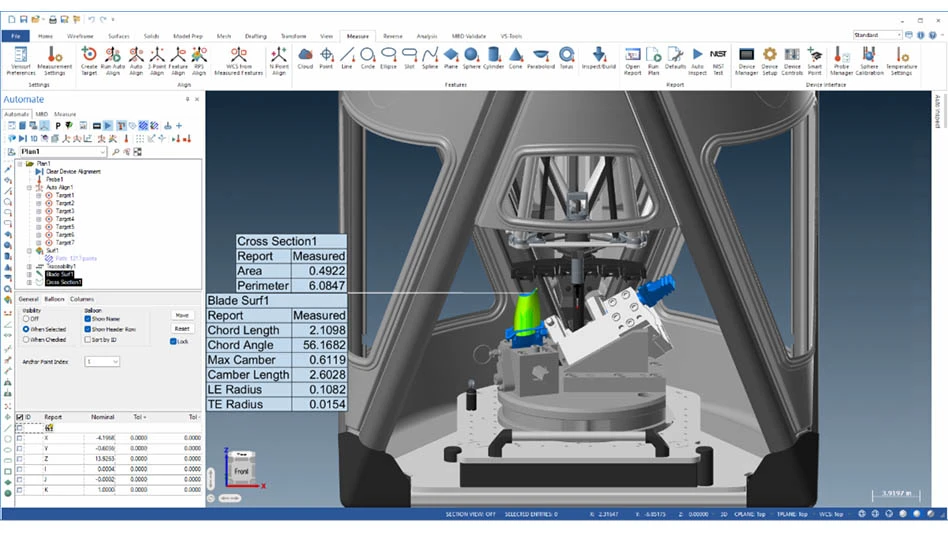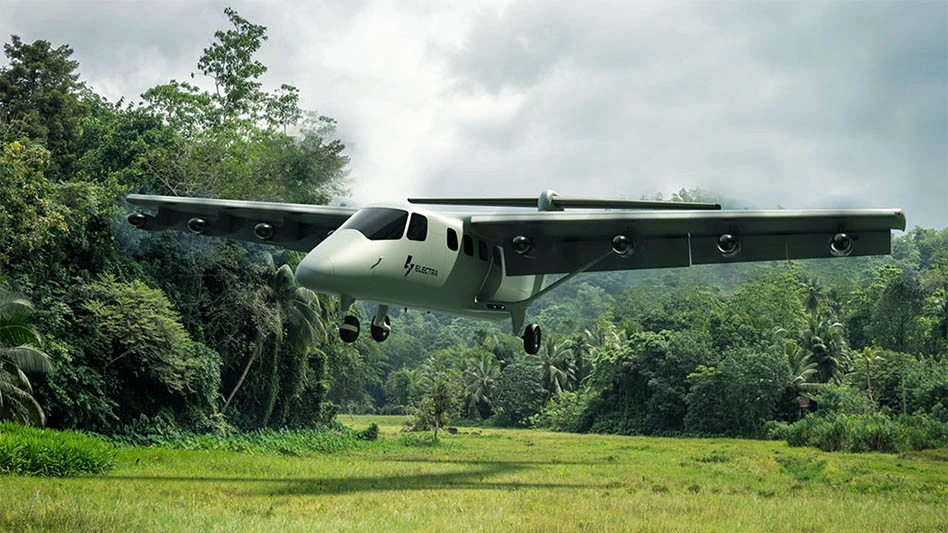 The pace has quickened as the aerospace industry prepares its manufacturing processes for the new engine designs that will go into widespread use later in this decade. Leading jet engine manufacturers all have major new engine programs underway. With an average of 20 years using the present engine designs, turbine engine manufacturers (TEMs) are entering into the next 20-year cycle with an array of exciting new designs. Combustors are a key component for these engines requiring high temperature metals with increasingly complex-shaped components containing thousands of effusion (shallow angle to the surface) cooling holes. As the next generation of engines enters into production, combustors and adjacent hot section components for these engines will require advanced laser processes and precision equipment to handle the increased complexity.
The pace has quickened as the aerospace industry prepares its manufacturing processes for the new engine designs that will go into widespread use later in this decade. Leading jet engine manufacturers all have major new engine programs underway. With an average of 20 years using the present engine designs, turbine engine manufacturers (TEMs) are entering into the next 20-year cycle with an array of exciting new designs. Combustors are a key component for these engines requiring high temperature metals with increasingly complex-shaped components containing thousands of effusion (shallow angle to the surface) cooling holes. As the next generation of engines enters into production, combustors and adjacent hot section components for these engines will require advanced laser processes and precision equipment to handle the increased complexity.
“Combustor design and manufacture in turbine engines are key to an engine’s fuel efficiency, environmental footprint, and lifetime,” says Terry VanderWert, president of Prima Power Laserdyne “Cooling in earlier combustor designs was based more on combustor ‘hooks’ and the simple geometry of EDM holes for cooling. As the improved designs of the last 20 years were pressed into service, they allowed engine components to operate at higher and higher temperatures. The newer combustors are being fabricated with proprietary thermal barrier coatings, with denser patterns of smaller diameter, and advanced designs of shaped holes for more effective cooling. For these designs, aerospace engine manufacturers have seen the need for the latest laser processing technology along with precision placement of the beam on the workpiece.”
Evaluating new laser processes
For more than three decades, TEMs have used Laserdyne systems for multi-axis laser processing work to process high temperature aerospace materials. By adding newer systems over the years and upgrading their products with the latest software and hardware enhancements, these aerospace manufacturers have kept current with requirements. For example, one manufacturer presently has three generations of Laserdyne products: three Laserdyne 795 systems, the current flagship in the Laserdyne product line; four Laserdyne 790 systems; and one Laserdyne 890 gantry system. These systems incorporate Nd:YAG and CO2 lasers and are used for drilling and cutting aerospace combustors, including those with special coatings.
 Today, the Champlin, Minnesota, company is delivering the new Laserdyne 430 BeamDirector (430BD) system, a machine equipped with a high-power fiber laser that uses floor space more efficiently. In the hands of TEMs and their subcontractors, these systems are used to validate new processes and increase productivity on existing parts. Some of the processes are being developed in collaboration with Prima Power Laserdyne.
Today, the Champlin, Minnesota, company is delivering the new Laserdyne 430 BeamDirector (430BD) system, a machine equipped with a high-power fiber laser that uses floor space more efficiently. In the hands of TEMs and their subcontractors, these systems are used to validate new processes and increase productivity on existing parts. Some of the processes are being developed in collaboration with Prima Power Laserdyne.
This approach combines Laserdyne’s proprietary motion and process control with the beam quality and energy control of fiber laser. Mark Barry, vice president of Prima Power Laserdyne, says this combination has been shown to yield advancements in cutting, drilling, and welding.
“An increasing number of Laserdyne customers are investigating and quickly embracing the use of our approach to fiber laser technology including OEM and Tier 1 TEM suppliers in Europe, Asia, and North America,” Barry explains. “One European aerospace engine manufacturer is in the process of taking delivery of our new Laserdyne 430 BeamDirector laser system. This is in addition to six older Laserdyne systems it currently uses.”
The supplier to Airbus, Boeing, Bombardier, Canadair, Embraer, and Superjet plans to use a 6-axis system to create new manufacturing processes while improving existing ones.
Multi-axis laser processing
“Laserdyne is not an expert in turbine engine design, but we have played a part in this industry for over 30 years. Cooling holes in the next generation of engines will be even more design-specific than they are in the current engine designs,” VanderWert states. “Cooling holes will be different in ways that will promote longer engine life and reduced fuel use and emissions. Current engines are very good in these critical areas now but the new engine designs will be dramatically better.”
Implications
While the fiber laser allows manufacturers to duplicate processes that have been developed on a system using a Nd:YAG laser, it can also increase productivity and quality and lead to processes for new designs that could not be realized reliably or cost effectively using Nd:YAG laser processing. Here’s how:
Miniaturization – While aerospace engines in some cases are growing in size – along with the size and carrying capacity of the planes themselves – controlling the number, and smaller diameter, of cooling holes is an important consideration. The complex shape of these holes in irregular patterns in contoured high-temperature parts can be produced more accurately at higher speeds with fiber laser systems than with older Nd:YAG systems.
Improving the quality (divergence and energy distribution) of the beam from a given laser impacts the ability to focus the laser. This in turn influences the size and shape of holes that can be laser processed. The size and shape of features that can be cut, the size and shape of holes that can be drilled (laser produced holes need not be only round), and the size of geometry of welds that can be produced are all effected. Fiber laser enables shape change and miniaturization through its smaller focused beam size.
Throughput –With fiber lasers’ higher average power, the pulses used to produce a smooth cut, drill an array of holes, or produce a seam weld by a series of overlapping pulses can be delivered at higher rates, allowing higher throughput. In one case, cutting and trepan drilling (producing a hole by cutting the circumference) in a 3mm thick high temperature alloy using a fiber laser is more than three times faster than with a Nd:YAG laser.
 This higher processing speed provides lower cost in manufacturing existing designs, and it allows fiber lasers to be used where Nd:YAG laser processing was previously uneconomical.
This higher processing speed provides lower cost in manufacturing existing designs, and it allows fiber lasers to be used where Nd:YAG laser processing was previously uneconomical.
Versatility – 3D processing systems with fiber lasers are providing flexibility for laser cutting, drilling, and welding of both two- and three-dimensional components with little to no changeover. These systems are designed with standard features (e.g. database of laser parameters for commonly processed materials), making development and setup of new processes straightforward. These latest laser systems provide advanced controls and software for consistency of manufacturing processes. Fiber lasers eliminate the need for tuning to obtain power and beam quality changes over time due to aging flash lamps. Also, these systems often eliminate the need to change optics when switching between cutting and welding, depending on the operator’s skill.
A big swing toward laser technology
Manufacturers using multi-axis laser processing with fiber lasers can replace older, less reliable equipment with nearly maintenance-free systems that do more and provide the capability for higher quality work.
One aerospace engine manufacturer says that new manufacturing processes probably will likely be adopted “across the board.” For this reason, the last two years were important capital investment planning periods in which a big swing occurred toward this newest technology to produce the new engines.
Another aerospace engine manufacturer said it wants the latest technology to manufacture combustors and other hot section components for its next-generation engines. Not wanting to rely on 15- to 20-year-old equipment, the manufacturer has begun a major examination process of what it has, what it needs, and what is available that can add quality and operating efficiency to these new engine designs and processes to manufacture them.
Multiple new laser systems needed
While the addition of multiple new laser systems incorporating the latest technology is anticipated, entire facilities are also a part of the planning process. Older laser systems and manufacturing approaches will be used for decades to produce existing designs, but aerospace manufacturers are adopting an open mind to the new technology. The analysis and planning is all encompassing and goes far beyond the laser portion of manufacturing.
While industry generally looks 2 to 3 years out for planning volume and capacity, the aerospace industry goes to a lot of effort planning 10-plus years. Planning anticipates capital needs, building facilities, equipment and technology needs, and many other components. A huge swing occurs when taking a large volume of engine production and switching it over to a new design, so aerospace engine manufacturers spend a lot of time and planning resources to support this change. Along with this is the testing of new processes, including Laserdyne’s new technology, to ensure that they contribute to the decision to change.
Energy saving, space saving
“Fiber laser technology is more energy efficient than earlier processes,” Barry says. “It requires lower input power for a given level of average output power and also requires less cooling.” The technology also allows the new Laserdyne unit to be smaller.
With higher velocity and acceleration using less power while improving precision and accuracy, the third generation BeamDirector (BD3Y) used on these new systems have the exclusive Laserdyne contouring head design with C-axis (rotary) motion of 900°, and D-axis (tilt) motion of 300°. Among its many features is a direct drive design, advanced optical encoders for improved accuracy and repeatability, higher assist gas air-flow, adjustable mirrors for easy and accurate beam alignment.
According to Barry, “Customers’ new 430BD systems will use the Laserdyne S94P control, which includes a full complement of standard hardware and software features. These include Automatic Focus Control for capacitive part sensing; patented Optical Focus Control (OFC) for sensing of thermal barrier coated surfaces; ShapeSoft software for programming shaped holes; Breakthrough Detection for drilling clean, consistent holes with the minimum number of pulses; mapping; and numerous additional software and hardware features. This control, familiar to many present Laserdyne equipment users, will also allow the customer to use programs created for different Laserdyne systems with little or no modification.”
Prima Power Laserdyne
www.primapower.com

Explore the January February 2015 Issue
Check out more from this issue and find your next story to read.
Latest from Aerospace Manufacturing and Design
- Demystifying Controlled Unclassified Information (CUI)
- Simplify your shop floor operations while ensuring quality parts
- Happy Independence Day - July 4th
- Bombardier receives firm order for 50 Challenger, Global jets
- Automatic miter bandsaw
- SAS orders 45 Embraer E2 jets with options for 10 more
- Height measuring instrument
- Shopfloor Connectivity Roundtable with Renishaw & SMW Autoblok





